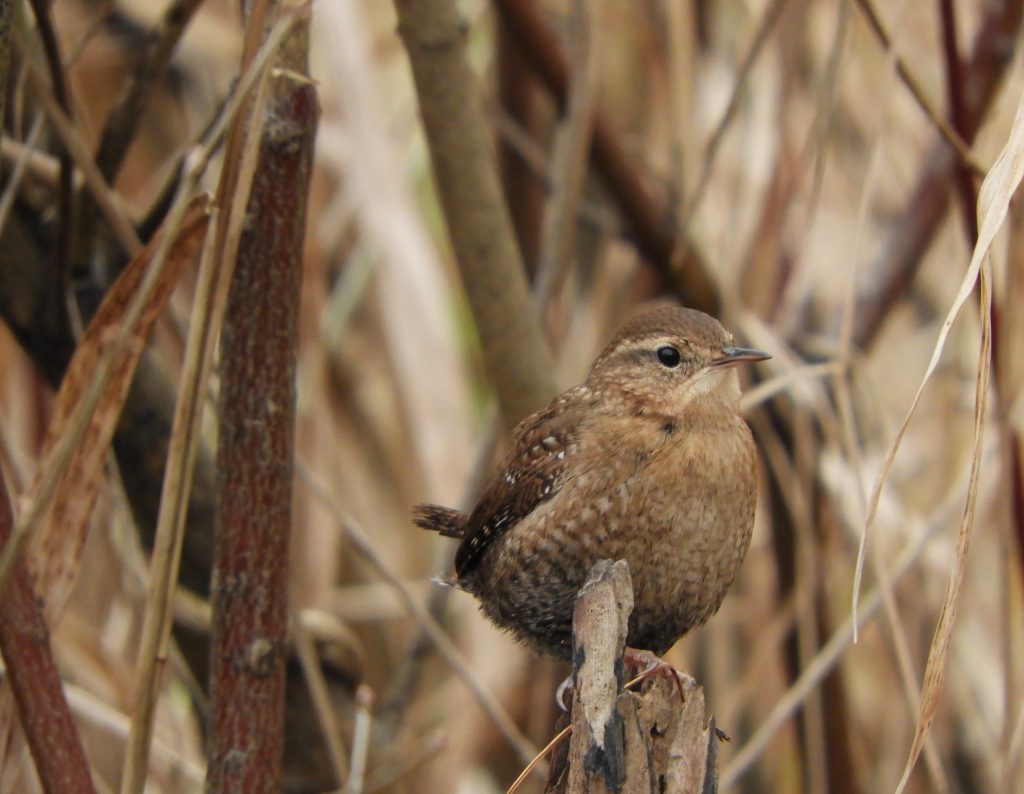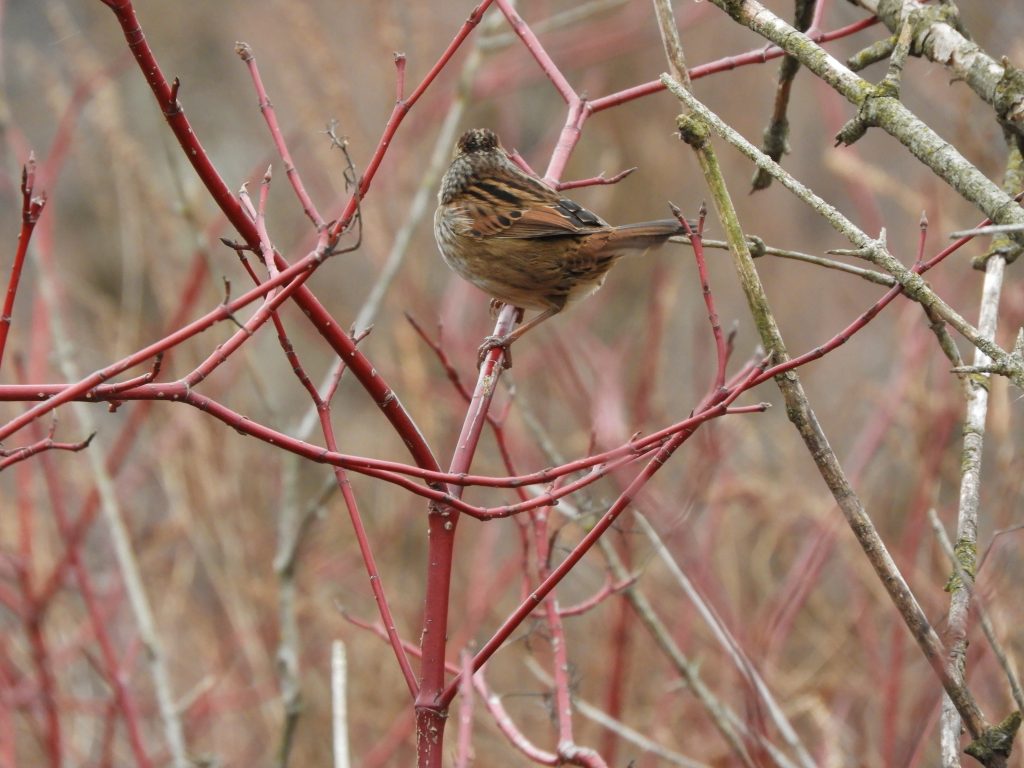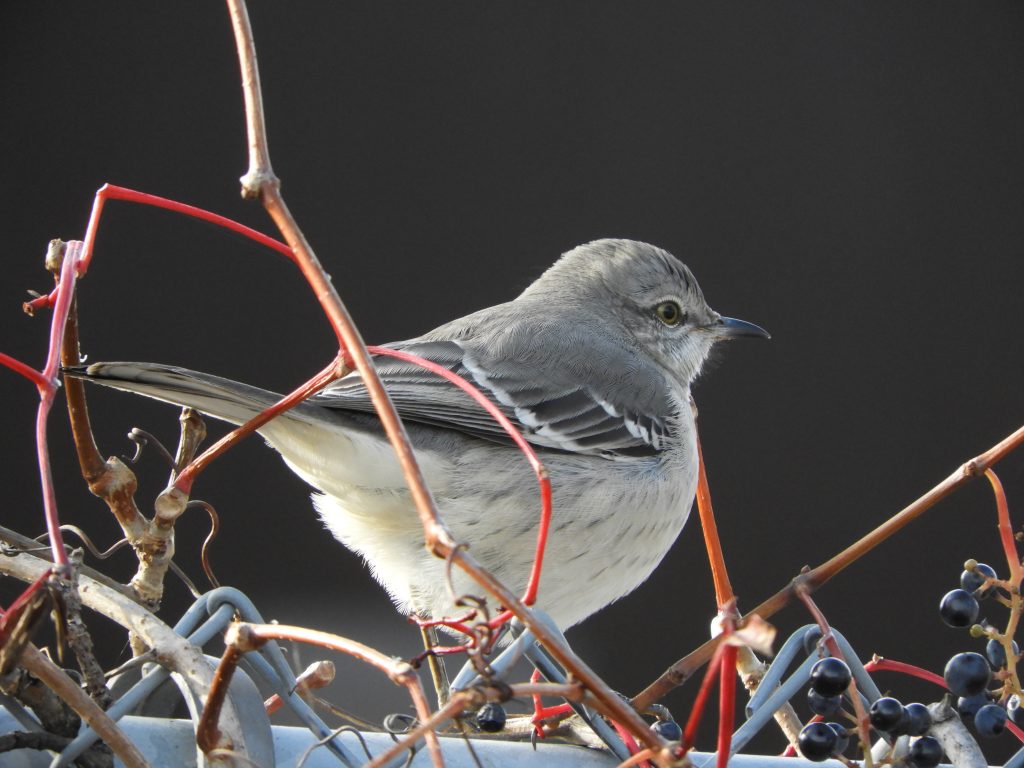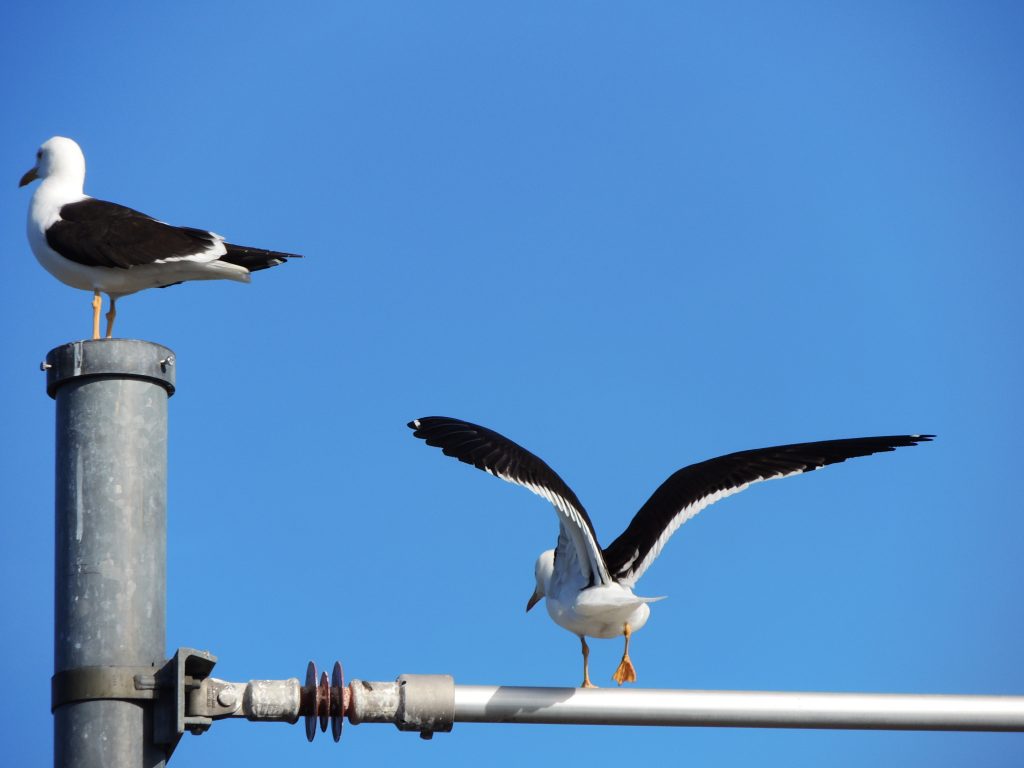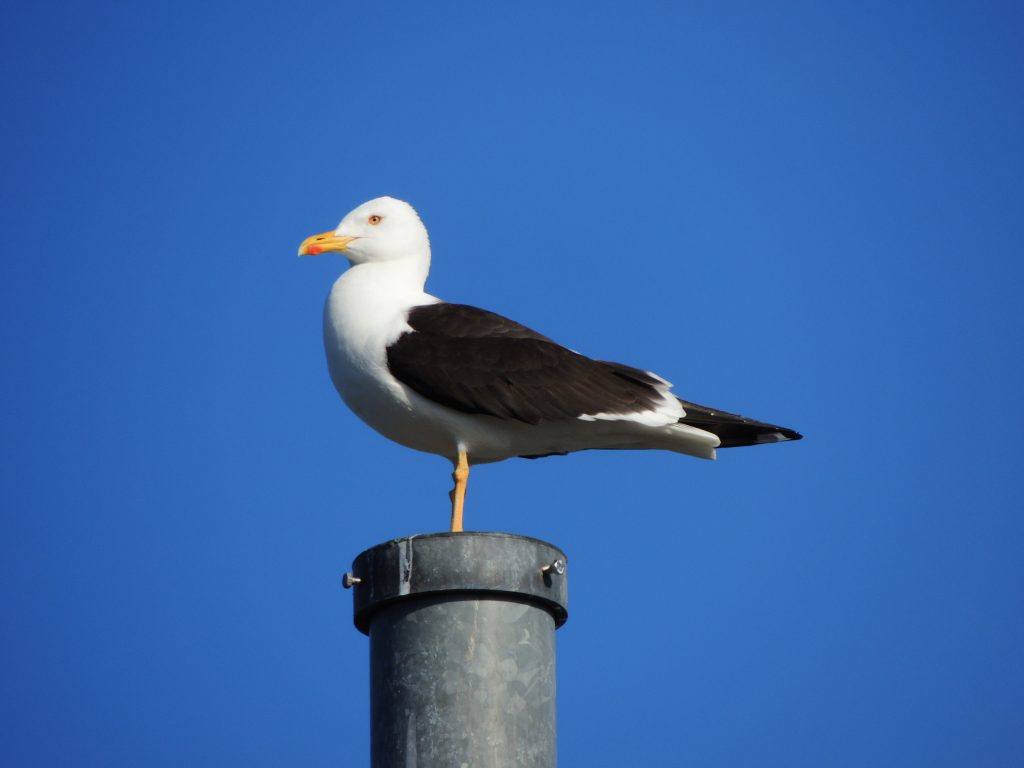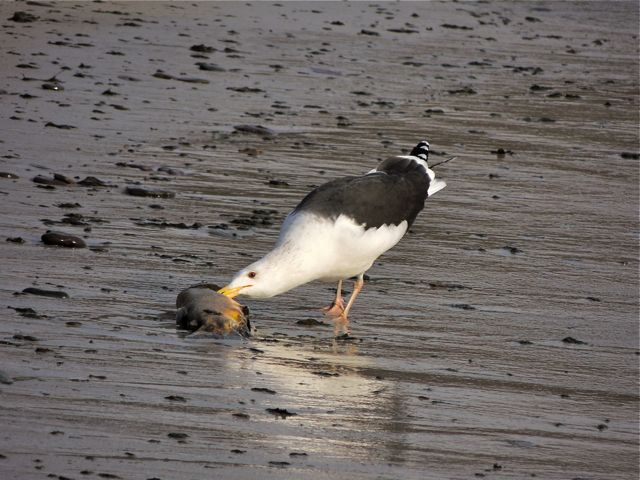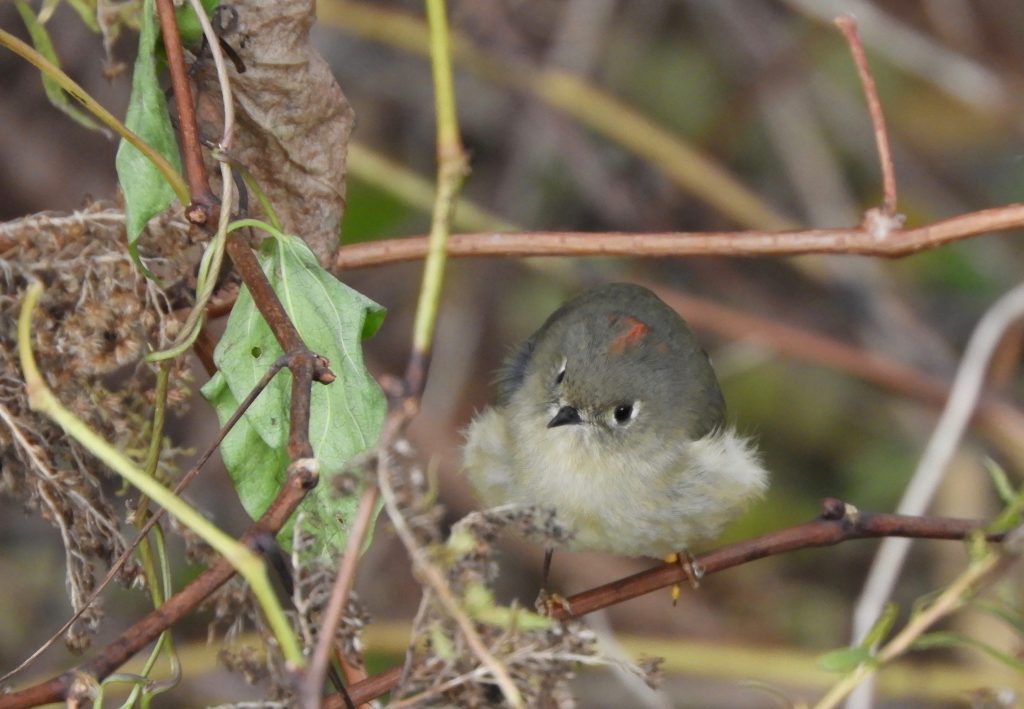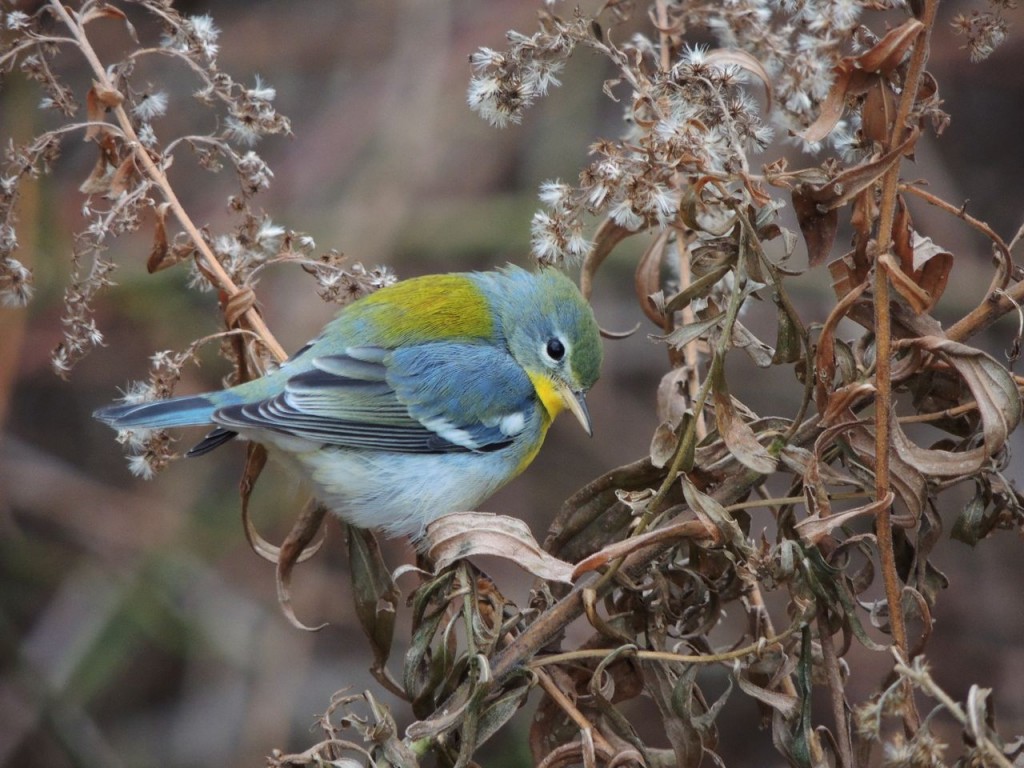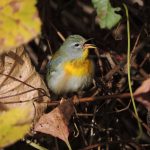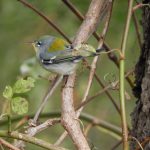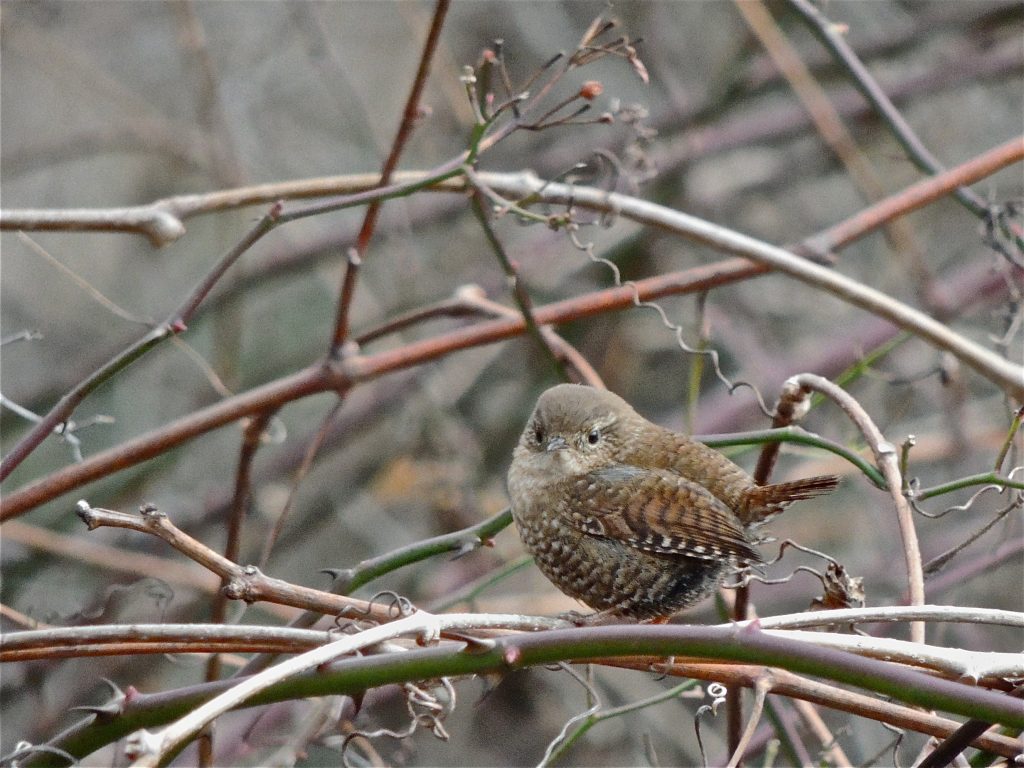December 5 2018. Sedgewick Park, and Bronte Harbour, Oakville, ON. An odd pairing of My Birds of the Day to be sure: Snowy Owl, a symbol of the bleakest winter landscape, and Hooded Warbler, a neotropical insectivore that breeds here but should be in Central America right now. Certainly a stark contrast that requires some explanation.
It was a lightly overcast day, cold, hovering around zero Celsius, just at the point where should-be-soggy underfoot is crunchy dry. I spent an hour or two at my favourite sewage treatment plant (see November 7th) watching a female Hooded Warbler, an Orange-crowned Warbler, a handful of Golden-crowned Kinglets and a Hermit Thrush. These were winter delights involving no field-craft or birding skill of my own, they were all widely known to be lingering in this little haven of relative warmth. It was perhaps the avian equivalent of shooting fish in a barrel.

Satisfied with warbler time, I drove a short distance to a mostly man-made harbour on the shore of Lake Ontario. In a somewhat sheltered corner, plates of thin ice clicked and clinked as they jostled on the surging waters and not many yards away a trio of Hooded Mergansers was diving for dinner.

Like the neo-tropical warblers of earlier, I’d been told exactly where to look for the Snowy Owl, out near the lighthouse. Again, no birding skill needed just the willingness to stand where directed exposed to a cool northwest breeze and look across the water. I said a cool breeze because, although my hands soon objected, in a month or two such a breeze will more likely be bitterly cold, the sort that deadens fingers and penetrates to your core.
Snowy Owl was a youngster, the dense dark barring across its belly was a giveaway. According to the Cornel Lab of Ornithology’s excellent Birds of North America website, it will take three to four years for a female to attain adult plumage but eight to ten years for a male to reach the breathtaking almost pure snowy white state.

Back to the warblers for a minute. As discussed in my Northern Parula post of a month ago, they definitely don’t belong here in December; however, the owl does – but with some explanation. They are an arctic bird, circumpolar in distribution, and many spend long dark winters above the Arctic Circle. Others move south to tundra country and farther into Canada’s provinces. Lake Ontario is quite far south but we have been seeing Snowy Owls around here almost every winter for a few years, they’ve almost become reliable. The winter of 2011-12 resulted in snowies being seen in every province and 31 states, (including Hawaii, albeit with much head-scratching as to how it got there, did it hitch a ride on a ship?). More recently the winter of 2013-14 saw a big irruption and it happened again in 2016-17. There are more of them and more often. Much research has been done but logical suggestions that periodic large irruptions are tied to the boom-bust cycles of arctic lemming populations are not borne out. So what’s going on.? Can we point to climate change as a factor? Or could it be that there are more and better dressed birders, spending more time with sophisticated optical equipment and instantly connected?



